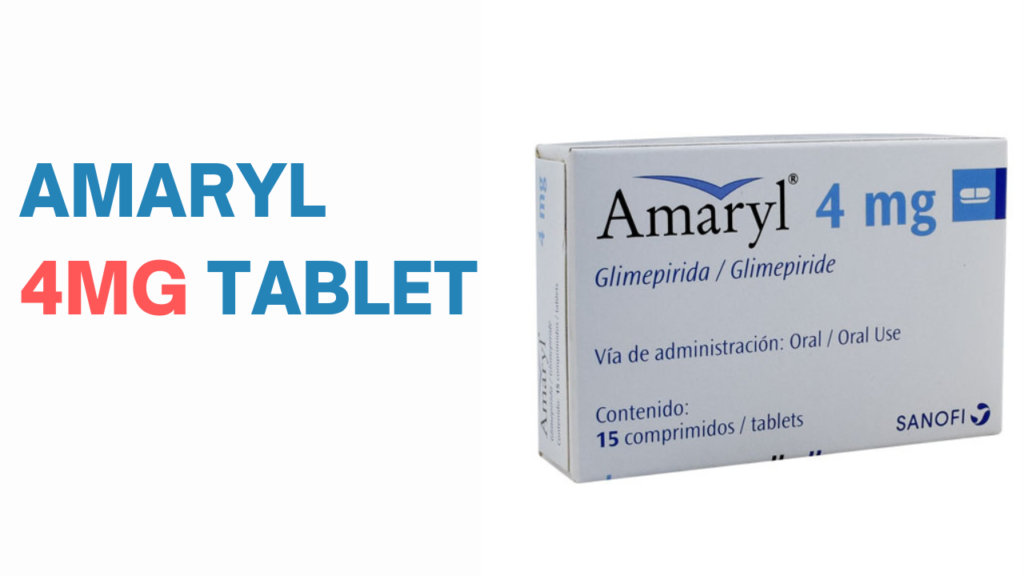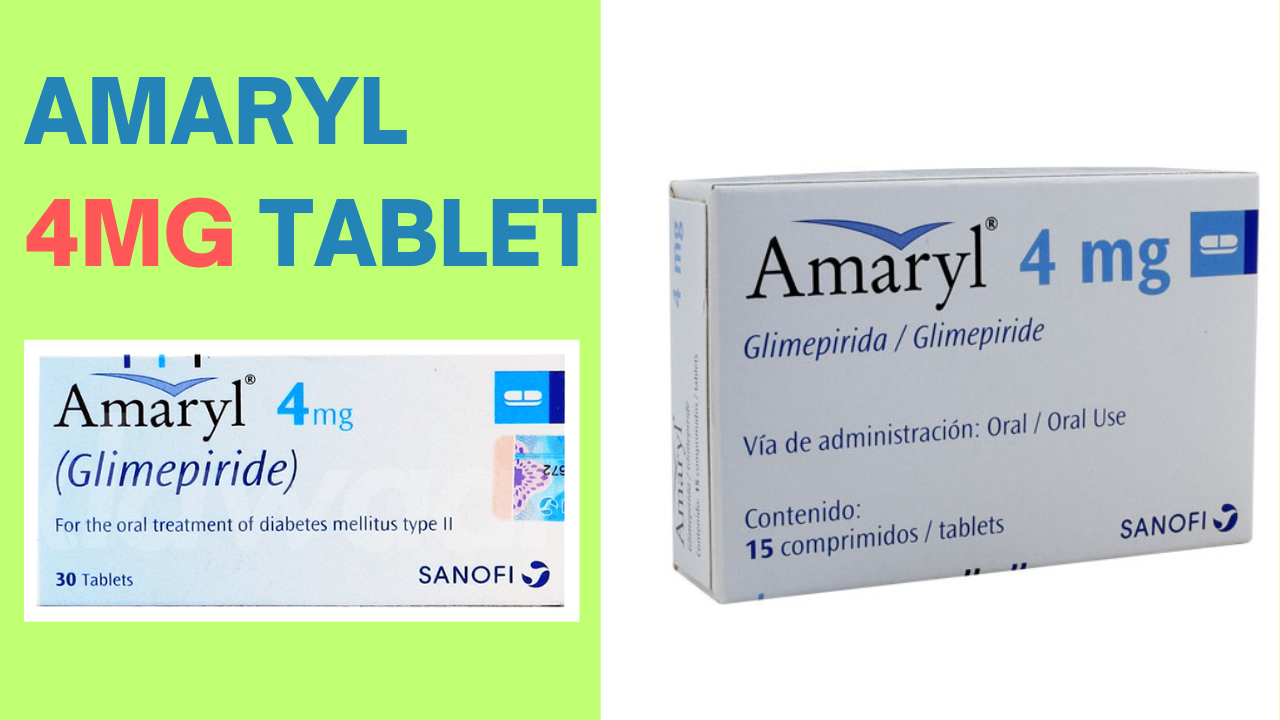Amaryl 4mg Tablet: Unlocking the Secrets of a Diabetes Wonder Drug
In the realm of diabetes management, Amaryl 4mg Tablet stands as a stalwart defender, aiding individuals in their quest for stable blood sugar levels. This medication, with its unique composition and mechanism of action, has become a cornerstone in the treatment of type 2 diabetes mellitus. In this comprehensive 1000-word article, we will delve into the intricacies of Amaryl 4mg Tablet, exploring its introduction, uses, potential side effects, and the economic aspect of its acquisition.
Introduction:
Amaryl 4mg Tablet belongs to the sulfonylurea class of drugs, with glimepiride as its active ingredient. Glimepiride works by stimulating the release of insulin from the pancreas, thereby facilitating the uptake of glucose by the body’s cells. This mechanism of action plays a pivotal role in regulating blood sugar levels, making Amaryl an invaluable asset in the management of type 2 diabetes.

Uses:
The primary use of Amaryl 4mg Tablet is to control and regulate blood sugar levels in individuals diagnosed with type 2 diabetes mellitus. It is often prescribed alongside a proper diet and exercise regimen to achieve optimal results. The medication can be used either as a monotherapy or in combination with other antidiabetic drugs, depending on the individual patient’s needs.
Amaryl’s effectiveness lies in its ability to enhance insulin secretion, especially during meals when blood sugar levels tend to spike. By promoting insulin release, Amaryl assists in the efficient utilization of glucose, preventing hyperglycemia and its associated complications.
Dosage and Administration:
The dosage of Amaryl 4mg Tablet is determined by healthcare professionals based on various factors, including the patient’s overall health, response to treatment, and existing medical conditions. Typically, the medication is taken once daily, preferably with breakfast or the first main meal of the day.
It is crucial for patients to adhere strictly to the prescribed dosage and administration schedule. Missing doses or altering the prescribed regimen can lead to fluctuations in blood sugar levels and compromise the effectiveness of the treatment.
Side Effects:
While Amaryl is generally well-tolerated, like any medication, it may cause side effects in some individuals. Common side effects include:
Hypoglycemia: A potential side effect of Amaryl is low blood sugar levels, leading to symptoms such as dizziness, sweating, and confusion. It is essential for patients to be aware of these signs and take appropriate measures to address hypoglycemia promptly.
Gastrointestinal Distress: Some individuals may experience nausea, vomiting, or abdominal discomfort. These all symptoms are usually mild ..
Allergic Reactions: Although rare and normal, allergic reactions to Amaryl can occur. Signs of an allergic response include rash, itching, swelling, severe dizziness, and difficulty breathing.
Liver Function Abnormalities: Amaryl has been associated with changes in liver function tests in some cases. Regular monitoring of liver function is recommended during treatment of patient.
It is crucial for patients to report any unusual or severe side effects to their healthcare provider promptly. Additionally, individuals with a history of allergic reactions to sulfonylureas should exercise caution and inform their healthcare provider before starting Amaryl.
Price and Accessibility:
The cost of Amaryl 4mg Tablet can vary based on factors such as location, brand, and dosage form (generic vs. brand name). Patients are encouraged to explore options such as generic versions of the medication, which may offer a more cost-effective alternative without compromising efficacy.
Many pharmaceutical companies and healthcare providers offer assistance programs, discounts, or coupons to make Amaryl more accessible to individuals with diabetes. It is advisable for patients to inquire about such programs and explore available avenues to minimize the financial burden of long-term medication use.
In conclusion, Amaryl 4mg Tablet stands as a beacon of hope for individuals grappling with type 2 diabetes. Its unique mechanism of action, coupled with a judicious approach to dosage and monitoring, makes it a valuable asset in the arsenal against this chronic condition. As with any medication, open communication between patients and healthcare providers is paramount to ensuring optimal treatment outcomes and minimizing potential risks.
This 1000-word exploration of Amaryl 4mg Tablet provides a holistic understanding of its introduction, uses, potential side effects, and considerations regarding its economic aspect. In embracing the power of knowledge, individuals can navigate the landscape of diabetes management with confidence and resilience.
